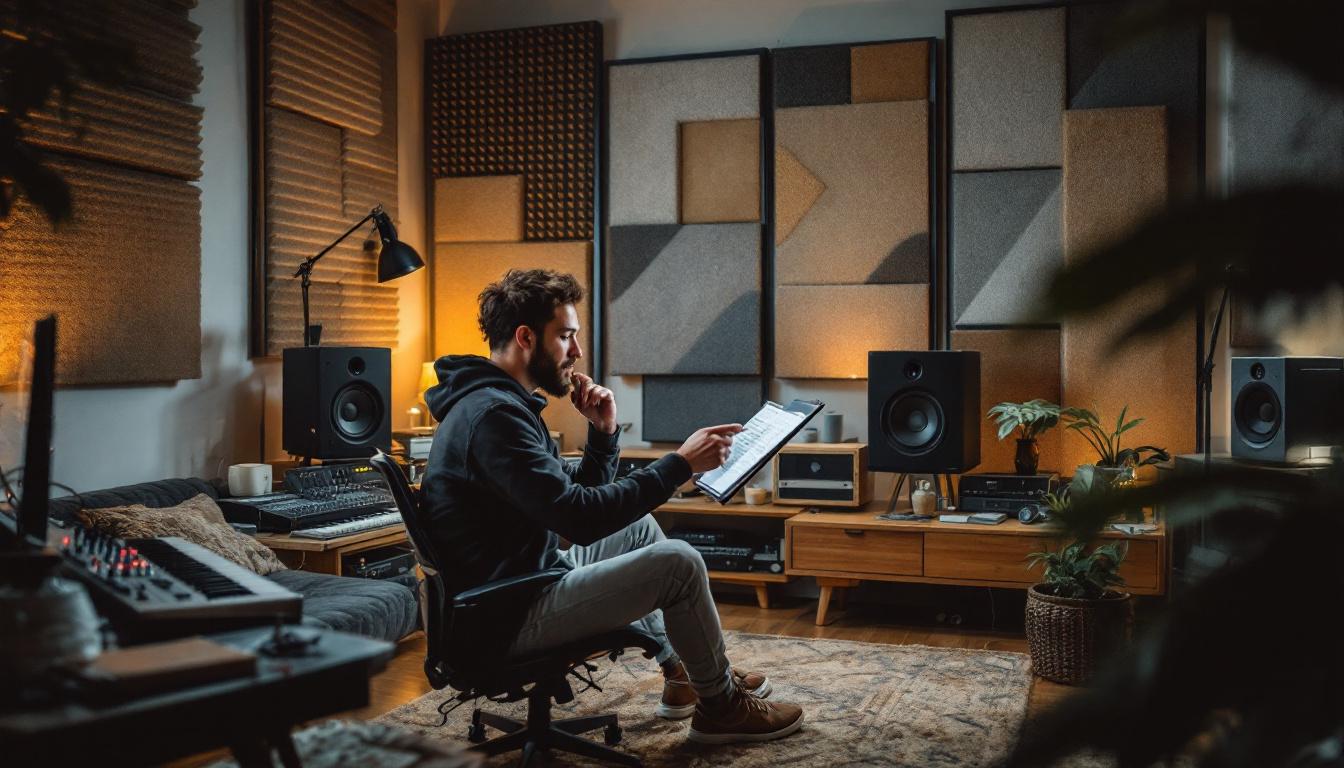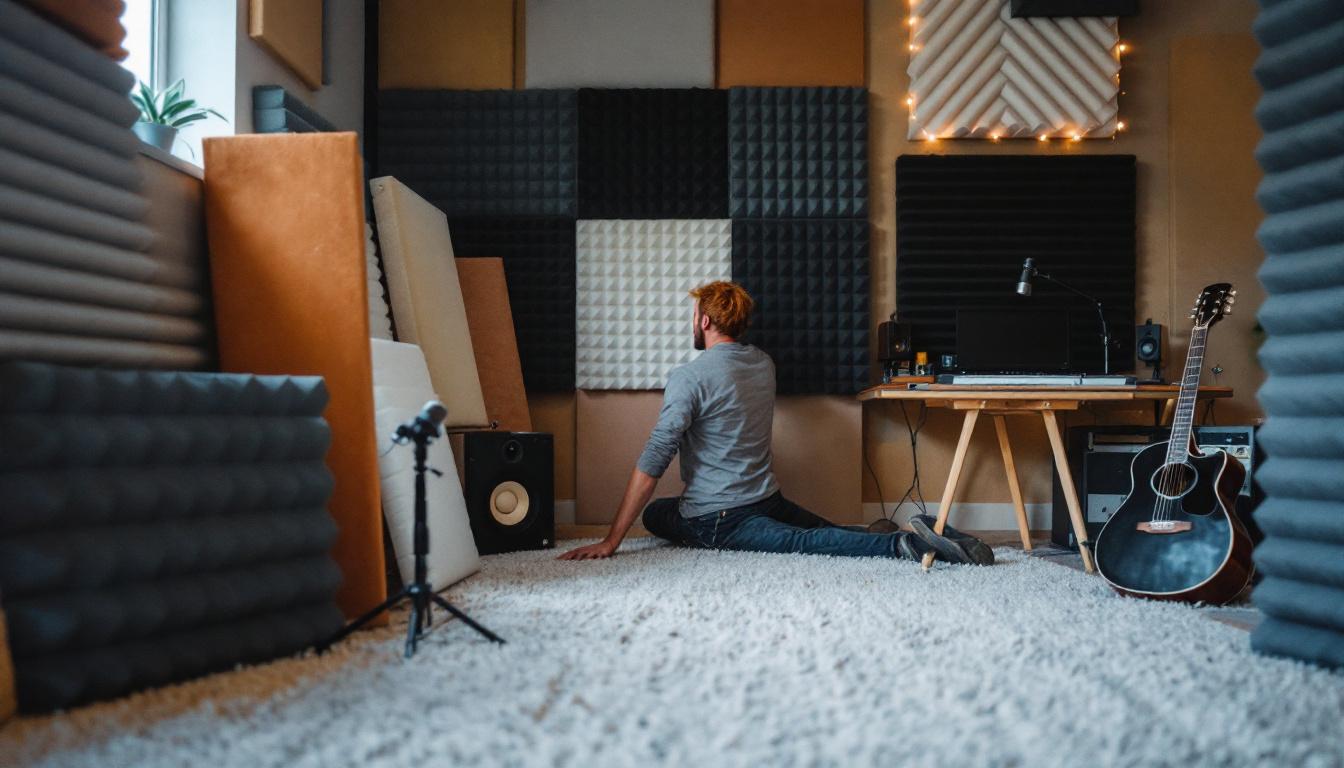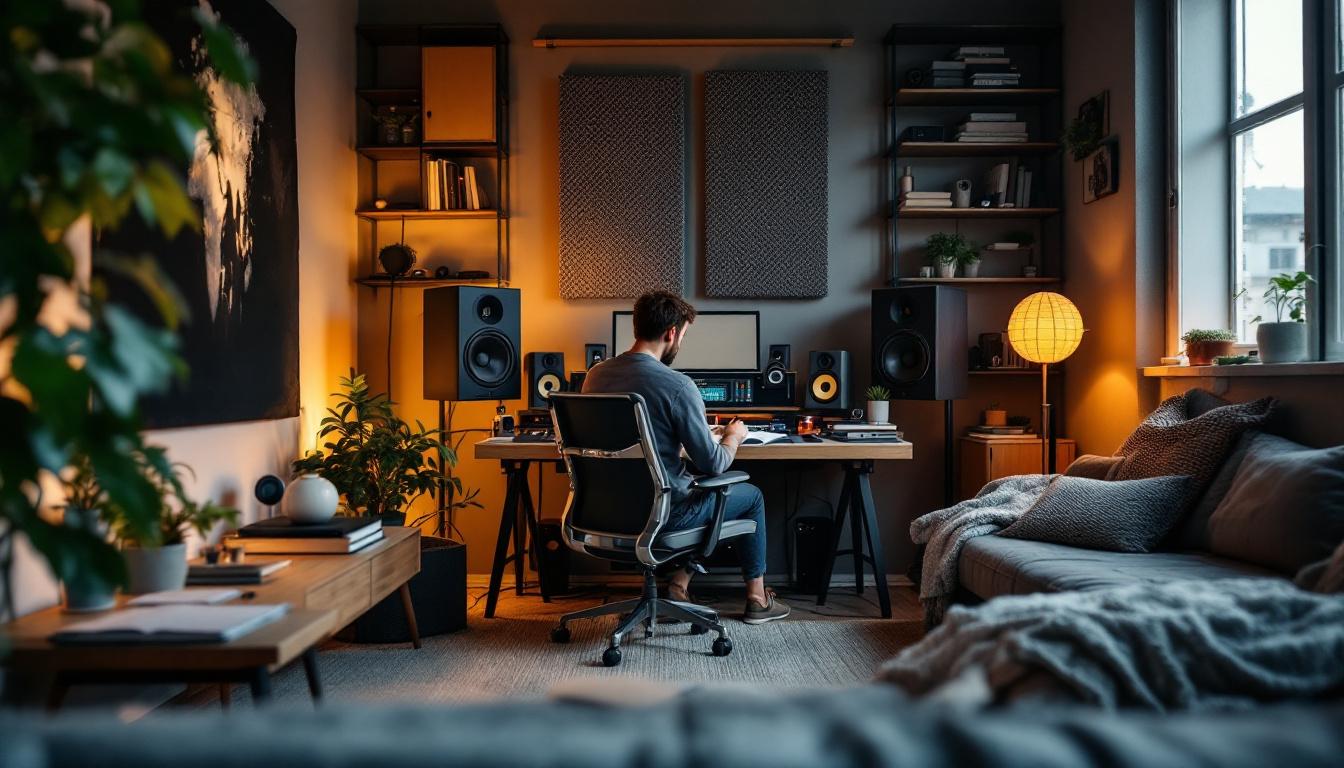Understanding the Basics
When it comes to creating the perfect home studio, two terms often get thrown around like confetti at a New Year’s party: soundproofing and acoustic treatment. While they might sound like they’re interchangeable, they’re as different as cats and dogs—both great in their own right, but definitely not the same. Let’s dive into the nitty-gritty of what each term means and why you need to know the difference.
What is Soundproofing?
Soundproofing is all about keeping the noise in or out. Think of it as the fortress around your creative castle. If you live in a bustling city or have a neighbor who thinks they’re the next Beethoven (but really just sounds like a cat in a blender), soundproofing is your best friend. It involves using materials and techniques designed to block sound waves from entering or leaving a space.
Common soundproofing materials include heavy curtains, acoustic panels, and even soundproof drywall. But let’s be real: if you’re going to go all out with soundproofing, you might as well invest in some good insulation. Because who doesn’t want their studio to feel like a cozy cocoon where the outside world can’t reach you?
What is Acoustic Treatment?
Now, acoustic treatment is a bit different. Instead of blocking sound, it’s all about improving the sound quality within your studio. Imagine you’re in a small room, and every time you speak, your voice bounces off the walls like a hyperactive puppy. That’s where acoustic treatment comes in. It helps to reduce echoes and reverberation, making your recordings sound cleaner and more professional.
Acoustic treatment often involves using foam panels, bass traps, and diffusers. These materials help to absorb or scatter sound waves, creating a more balanced audio environment. So, if you want your music to sound like it was recorded in a high-end studio rather than a bathroom, acoustic treatment is the way to go.
Why You Need Both
Now that you know what soundproofing and acoustic treatment are, you might be wondering: “Do I really need both?” The short answer is yes! Think of it like a sandwich. You wouldn’t just have bread without the filling, right? Soundproofing is the bread that keeps the outside noise out, while acoustic treatment is the delicious filling that makes your sound tasty.

Creating the Ideal Environment
Imagine you’ve soundproofed your studio like a pro. You’ve got the heavy curtains, the thick walls, and maybe even a moat (just kidding, but wouldn’t that be cool?). However, if you neglect acoustic treatment, your recordings will still sound like you’re singing in a tin can. It’s crucial to create an environment where sound can thrive, not just survive.
By combining both techniques, you’ll have a studio that not only keeps unwanted noise at bay but also enhances your audio quality. It’s the ultimate combo for any aspiring musician, podcaster, or voice-over artist.
Common Misconceptions
There are plenty of misconceptions floating around about soundproofing and acoustic treatment. One of the biggest is that people think they can just slap up some foam panels and call it a day. Spoiler alert: it’s not that simple! While foam panels are great for absorbing sound, they won’t do much for soundproofing. Similarly, if you focus solely on soundproofing, you might end up with a room that’s quiet but sounds terrible.
Another common myth is that you need to break the bank to achieve great sound. While it’s true that some high-end materials can cost a pretty penny, there are plenty of budget-friendly options available. With a little creativity and resourcefulness, you can create a fantastic studio without selling your kidney on the black market.
Soundproofing Techniques
Ready to dive into the world of soundproofing? Here are some techniques to help you keep the noise where it belongs—outside your studio!
Sealing Gaps and Cracks
First things first: check for any gaps or cracks in your walls, windows, and doors. Sound can sneak through the tiniest of openings, so grab some caulk and seal those bad boys up. It’s like putting on a soundproofing superhero cape for your studio!
Also, consider using weather stripping on doors and windows. Not only will it help with soundproofing, but it’ll also keep your studio cozy during those chilly winter months. Who knew soundproofing could be so multifunctional?
Adding Mass
One of the most effective ways to soundproof a room is to add mass. This means using heavy materials that can block sound waves. Think of it like building a wall between you and the noisy world outside. Adding extra layers of drywall, using mass-loaded vinyl, or even hanging heavy curtains can make a significant difference.
Just remember: the heavier, the better! If you can’t lift it, it’s probably a good soundproofing material. Just don’t go overboard and turn your studio into a fortress that looks like it belongs in a post-apocalyptic movie.
Decoupling
Decoupling is a fancy term for creating separation between surfaces to reduce sound transmission. This can be done by using resilient channels or sound isolation clips when installing drywall. By creating a gap between the wall and the drywall, sound waves have a harder time traveling through, which means less noise gets into your studio.
It’s like giving sound waves a detour sign that says, “Sorry, you can’t come in here!” Who knew soundproofing could be so polite?
Acoustic Treatment Techniques
Now that you’ve got soundproofing down, let’s talk about how to treat your studio acoustically. After all, you want your recordings to sound as good as they can, right?

Using Acoustic Panels
Acoustic panels are the bread and butter of acoustic treatment. These foam or fabric-covered panels absorb sound waves and help reduce echoes in your studio. They come in various shapes and sizes, so you can get creative with your layout. You can even make a fun design out of them—think of it as art that doubles as sound treatment!
When placing your acoustic panels, focus on the first reflection points, which are the spots where sound waves bounce off the walls and back to your microphone. A little strategic placement can go a long way in improving your sound quality.
Bass Traps: The Unsung Heroes
Bass traps are the unsung heroes of acoustic treatment. These specialized panels are designed to absorb low-frequency sounds, which can be a real problem in smaller rooms. If you’ve ever noticed that your bass sounds muddy or boomy, bass traps are your solution.
Place them in the corners of your room, where low frequencies tend to build up. It’s like giving your bass a spa day—who wouldn’t want that? Your music will thank you for it!
Diffusers: Spreading the Love
Diffusers are like the social butterflies of the acoustic treatment world. Instead of absorbing sound, they scatter it, creating a more balanced sound environment. This helps to prevent dead spots in your studio where sound waves get trapped.
Think of diffusers as the party planners of your studio. They ensure that sound waves mingle and dance around the room instead of just sitting in a corner looking awkward. Plus, they can add a nice aesthetic touch to your space!
Budgeting for Your Studio
Creating a soundproof and acoustically treated studio doesn’t have to break the bank. With a little planning and some DIY spirit, you can achieve great results without emptying your wallet.

DIY vs. Professional Help
One of the first decisions you’ll need to make is whether to go the DIY route or hire a professional. If you’re handy and love a good project, there are plenty of tutorials online to guide you through the process. Just remember to measure twice and cut once—nobody wants to end up with a lopsided acoustic panel!
On the other hand, if you’re not confident in your skills or just don’t have the time, hiring a professional can save you a lot of headaches. Just be sure to do your research and find someone with a good reputation. After all, you don’t want to end up with a studio that sounds worse than it did before!
Finding Budget-Friendly Materials
When it comes to materials, there are plenty of budget-friendly options available. Look for used or surplus materials at local hardware stores, or even check online marketplaces. You’d be surprised at what you can find! Plus, it’s a great way to give your studio some character.
Don’t forget to get creative! Old blankets, pillows, and even furniture can be repurposed for acoustic treatment. Just make sure you don’t turn your studio into a hoarder’s paradise—there’s a fine line between creative and chaotic!
Final Thoughts
In the grand quest for the perfect home studio, understanding the difference between soundproofing and acoustic treatment is crucial. By combining both techniques, you’ll create an environment that not only keeps the noise out but also enhances the sound quality of your recordings.
So, whether you’re a budding musician, a seasoned podcaster, or just someone who loves to sing in the shower, investing in soundproofing and acoustic treatment will pay off in the long run. Your ears (and your neighbors) will thank you!
Now, go forth and conquer the world of sound! With the right techniques and a little creativity, your home studio will be the envy of all your friends. And who knows? You might just end up recording the next big hit!